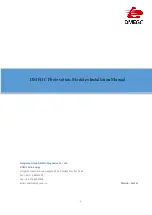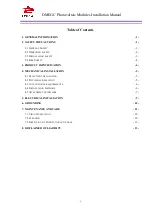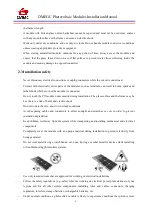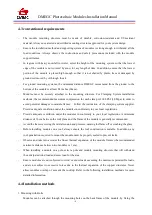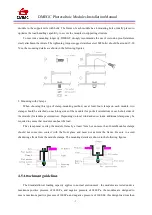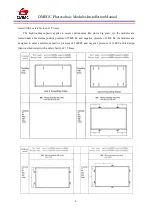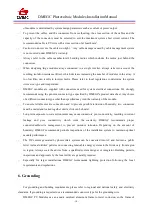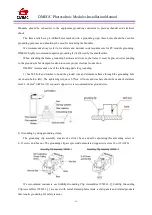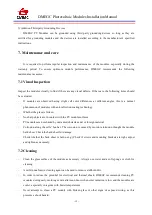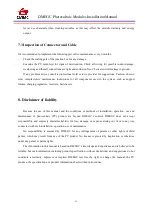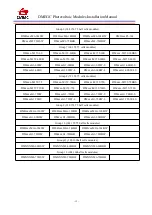
DMEGC Photovoltaic Modules Installation Manual
- 5 -
4. Mechanical Installation
4.1 Selecting the location
Select a suitable location for the module installation, where they receive maximum sunlight
throughout the year.
The module must be facing true south in northern latitudes and true north in southern latitudes.
The module should not be shaded at any time of the day.
The recommended ambient temperature should be within -20
℃
to 40
℃
, the temperature limits are
defined as the monthly average high and low of the installation site, the limit operating temperature
should be -40
℃
to 85
℃
.
DMEGC Solar Modules have passed the IEC61701 salt-mist, but galvanic corrosion can occur
between the aluminum frame of the Modules and mounting or grounding hardware if such hardware is
comprised of dissimilar metals. When DMEGC recommends that the module be installed at the
seaside, the module should be installed more than 500m away from the coastline. Confirm with
DMEGC, install after obtaining approval.
Modules must be installed or operated in areas where salt, hail, snow, sand, dust, air pollution,
chemically active, acid rain, soot, etc., are excessive. Modules must be sited in locations where
aggressive substances such as salt or salt-water, or any other type of corrosive agent, could affect the
safety and/or performance of the modules.
Do not use module near equipment or in locations where flammable gases can be generated or
collected.
4.2 Tilt Angle Selection
The tilt angle of the PV module is measured between the surface of the PV module and a horizontal
ground surface. The PV module generates maximum output power when it faces the sun directly.
For detailed information on the best elevation tilt angle for the installation, refer to standard solar
photovoltaic installation guides or a reputable solar installer or systems integrator.
Dust building up on the surface of the modules can impair
Module performance. DMEGC solar recommends installing the modules with a tilt angle of at least
10 degrees, making it easier for dust to be washed off by rain.

